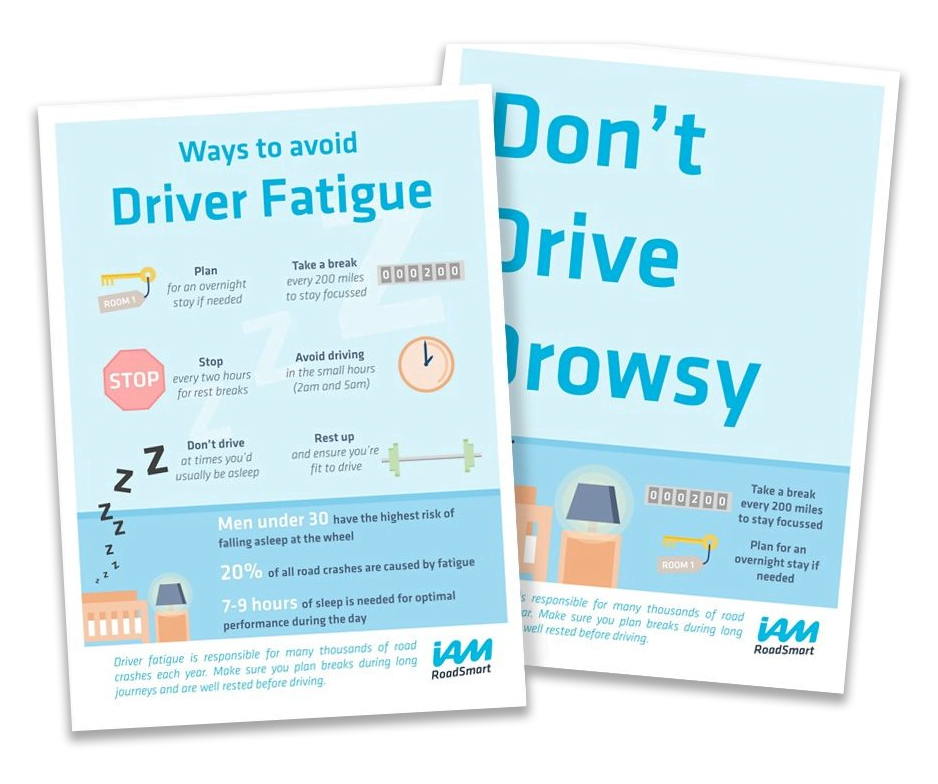
While most drivers know that drowsy driving is dangerous, driving while tired isn’t met with same kind of strong condemnation as driving under the influence of drugs or alcohol. But this shouldn’t necessarily be the case – drowsy driving has been shown to affect drivers’ performance in the same way as drink- or drug-driving.
Auto Express sent two journalists to the University of Southampton, to use their sophisticated driving simulator to investigate the effects of drowsy driving.
With Luke, staff writer at Auto Express, fresh and alert after a decent night’s sleep, and deputy consumer editor, Tristan feeling the extreme drowsiness that comes with getting absolutely no sleep the night before, the results of the test are close to what you might expect.
Here’s what Luke, who was using the simulator after a full night’s sleep, had to say about his experience:
“With a good night’s sleep under my belt, I breezed through the exam. I felt considerably more alert than my colleague (who passed out in an office chair shortly after the test was complete) and my pace through the course was steadier. I also kept my virtual vehicle between the white lines well and dealt with the hazards more effectively than Tristan.
Another interesting finding from the day was the difference in our attention. I looked ahead for potential hazards and anticipated the dangers, while Tristan (being completely exhausted) didn’t have the mental capacity for this sort of forward thinking. So his driving was more reactive, meaning his inputs weren’t as smooth as mine.”
Meanwhile, Tristan had a very different experience:
“One moment I would feel quite alright and appear to be functioning as normal, but the next I would be hit by a wave of tiredness and nausea…
It’s easy to imagine how someone without enough sleep might feel well enough to climb into their car, then start to fade while driving and risk nodding off at 70mph.
Behind the wheel of the simulator, I didn’t think I was performing too badly. I stopped in time for all the hazards, although in some cases it was a bit close for comfort.
I could tell, however, that my reactions were much less smooth than they normally would be while driving, and sometimes jerky. I wasn’t thinking ahead or doing any forward planning, as one ought to on the road.
My adherence to the speed limits wasn’t very accurate either. Sometimes I would unintentionally drive faster than was ‘legal’ on the simulated road, before realising and quickly slowing down.”
Rich McIlroy, a senior research fellow in transportation and human factors at Southampton University, oversaw the experiment, measured results, and concluded:
“Although the reaction times don’t really tell much of a story, something I thought was interesting was that in the second attempt at the test route for each participant, Tristan went faster and went around a couple of the obstacles by speeding up and swerving to avoid them,” he explained. “In one case, he went slightly off to the right of the carriageway to avoid the pedestrian and avoid braking.
“Luke actually did not need to brake, or only needed to brake very softly, for three of the stopping events; essentially, he anticipated the event,” Rich continued. “Tristan did not seem to display this anticipatory behaviour, but rather just sped up and swerved around obstacles.”
Neil Greig, director of policy and research at IAM Roadsmart, said, “Tristan knew he felt bad. There’s a concept out there that you suddenly fall asleep, but you don’t; you know you’re not feeling great, so it doesn’t creep up on you really. Tristan was also jabbing at the brakes, which indicates he wasn’t being as smooth as Luke.
“The expert advice is to take breaks every two hours and never to drive more than 300 miles in a day,” he continued. “When you do take a break, it should be at least 20 minutes. Have a coffee, have a rest. But you can’t expect to recharge your batteries with a one-hour nap every 24 hours.”
Those who drive for work are at particular risk of pushing their limits when driving. For practical advice on how to avoid drowsy driving, see our drowsy driving tips. To learn more about the risks and human cost of drowsy driving, see our drowsy driving facts.
Best of all, find out how we can help your fleet improve safety and minimise risks such as drowsy driving with our fleet risk management and online training package: CHOICES. To find out more about how CHOICES can improve your fleet safety and protect your organisation, get in touch.



